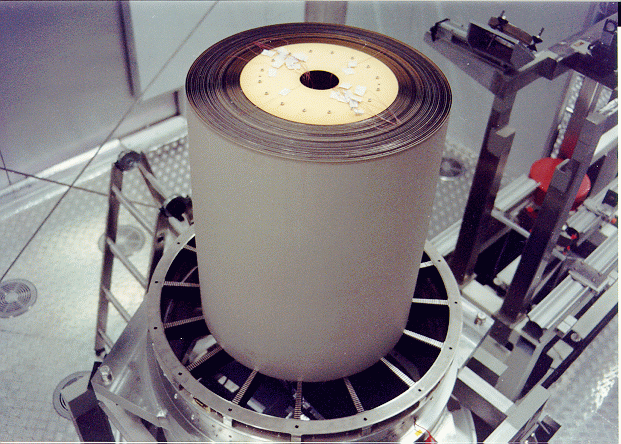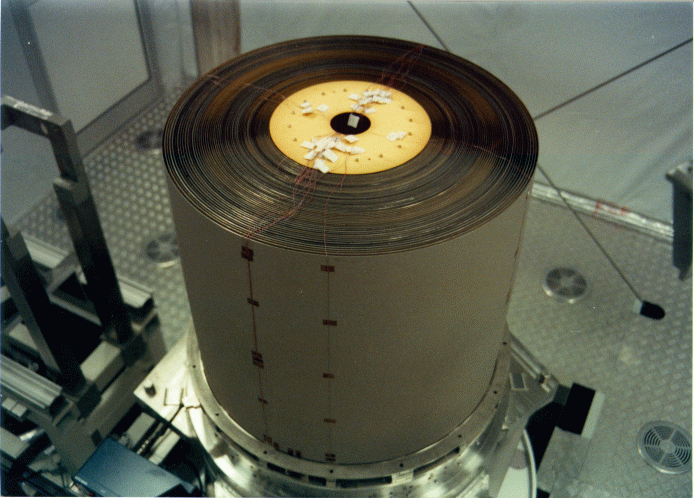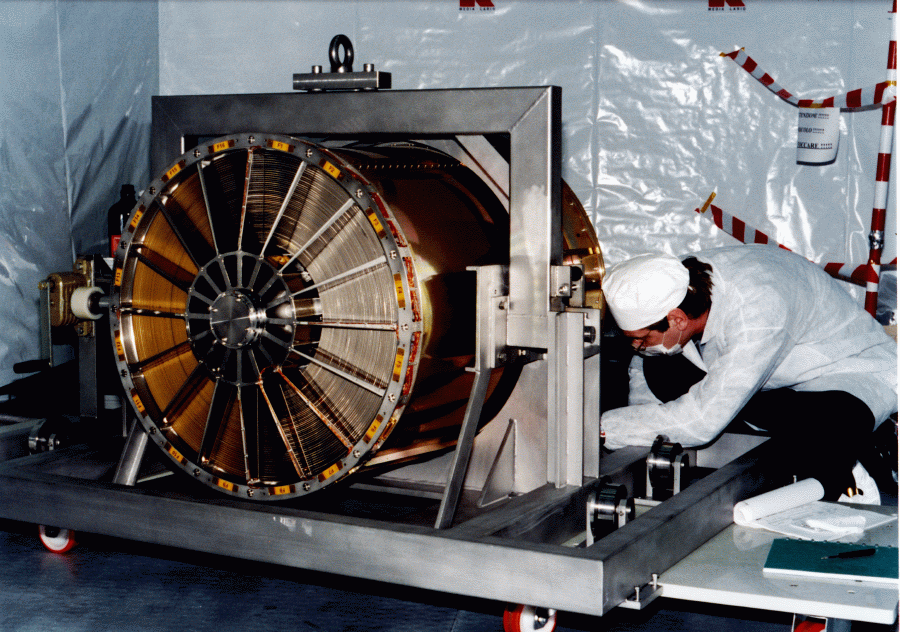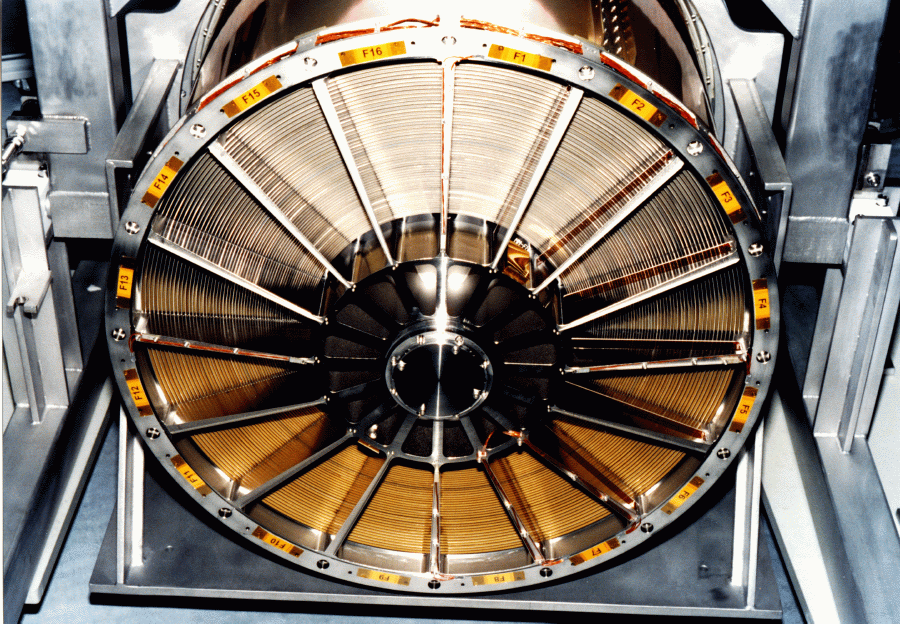XMM-NEWTON HARDWARE IMAGES - MIRRORS
Four Mirror shells

The four mirror shells (1,40,41,58) used during the EOBB measurements are shown in their assembled state. The picture was taken in the PANTER test chamber. The movable translators with which the mirror module could be moved in and out of the beam can also be seen. The entrance of the beam-pipe into the experiment-chamber is seen to the left of the mirror assembly.
QM mirror module under integration, 2/3 complete

QM mirror module under integration at the vertical facility at Media Lario (2/3 of mirror shells integrated).
QM mirror module under integration, complete

The QM mirror module under integration at the vertical facility at Media Lario (all mirror shells integrated). The shells 47-58 and 16-24 are X-ray quality shells, the remaining ones were shielded during the X-ray QM tests.
Section of an XMM-Newton mirror module

The picture shows the clipping of the mirror module of the European X-ray observatory XMM-Newton. One can recognize the 58 closely nested about 1 mm thick X-ray mirrors manufactured by a galvanic shaping process. The mirror systems were calibrated in the PANTER test facility at Neuried. The lower diagram shows the reflectivity of the single mirrors measured by using 8 keV X-rays.
XMM-Newton mirror module in testing, front view

XMM-Newton mirror module in testing at CSL. The module is viewed from the "front", i.e., the side from which photons enter during operation. In front, one can see the "spider" on which the 58 mirror shells are mounted.
XMM-Newton mirror module back view

View of the back side of an XMM-Newton mirror module. This is the side from which the photons continue to the detectors in the foci of the mirror shells, or onto the Reflection Grating Arrays.
XMM-Newton mirror module close-up view

A close-up view of the XMM-Newton mirrors shows the small thickness of the individual shells, leaving open a large fraction of the telescope entrance window, which would be blocked by thick mirrors, as used on several previous missions. The thickness of the mirror shells varies from ca. 0.5 mm (inner shells) to 1 mm (outer shells). The distance between the shells, i.e. the free aperture for incoming radiation onto each shell, ranges from ca. 1.8 mm (inner) to 4 mm (outer). The innermost part of the mirror modules do not contain any shells, because these would have small surface areas compared to the outer mirrors and thus would contribute only a tiny fraction to the total effective surface area. Instead, the central area is used to give the outer shells a stable fixture.
If you have any questions concerning XMM-Newton send email to xmmhelp@athena.gsfc.nasa.gov



